From Ruins to Cultural Haven: The Transformation Journey of Zuoying Guo Family Ancient House
by 王詩晴
In the afternoon, when we arrived at Guo Family ancient house nestled within the lanes of Dianzaiding Street, the usually tightly closed gates were unexpectedly wide open today – a truly fortunate coincidence. The weather was exceptionally pleasant, with sunlight filtering through the shadows of potted trees and casting a gentle glow on the wooden sign that read 'Zuoying Liantan Guo Family Century-Old Ancient House.' A light breeze delicately brushed against the familiar cobblestone walls of the old house, bringing a refreshing coolness. Ms.Xue noticed us taking photos at the entrance, and she kindly beckoned us inside, warmly welcoming us to explore the Guo Family Ancient House. Upon entering the gates, a gentle breeze carried with it the historical essence of the old residence, creating an atmosphere that felt like stepping into another dimension. In each breath, there was an added sense of joy and comfort. Ms.Xue added that they operate a bed-and-breakfast here, usually keeping the gates closed to ensure guest privacy. However, on this holiday with no guests around, she couldn't help but marvel at the seemingly destined timing, making this interview even more rare and special.
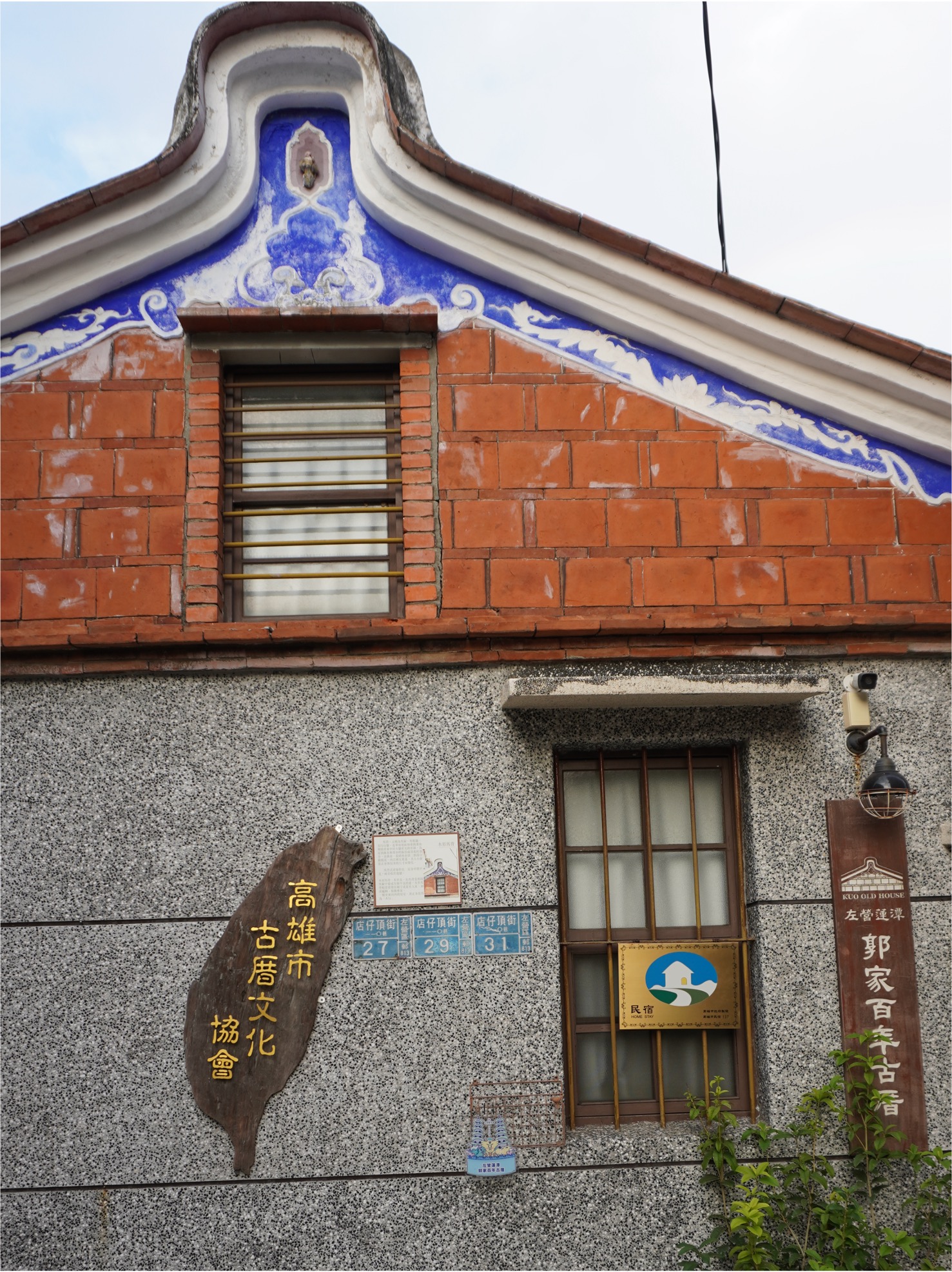
左營蓮潭郭家百年古厝
Ms.Xue is the manager of the Guo ancient house, born and raised in the Zuoying area. She has a deep connection to the prosperity and decline of this land. Standing in the courtyard in front of the house’s main hall, Ms.Xue gazes towards the distant sky, her eyes shimmering with profound emotions for the enduring history of this mansion. This interview captures a part of the stories of the military dependents' village in the Zuoying area, with Ms.Xue becoming a witness to this history.
"This land once quietly transformed into ruins due to the abandonment of the old house. The family had considered selling it, but this idea lingered without attracting any interest," reminisced Ms.Xue. "It wasn't until eight years ago when Mr.Guo Jinji, the current Chairman of the Ancient House Cultural Association and a descendant of the Guo family, had a touching dream," she continued. "In the dream, ancestors hovered above, unable to find their way home. Upon waking, he inquired about its meaning and learned that the elders were unwilling to sell this piece of land. This dream became a turning point in reevaluating the fate of the ancient house.
After discussions within the family, the Guo family decided to refurbish the house, and an unexpected stroke of luck ensued. Sister Xue explained, "At that time, the Guo family happened to have another piece of land on Xin Zhuangzai Road. Originally considered a difficult piece of land to deal with, a developer expressed interest in purchasing it for five to six million. This unexpected windfall became the source of funds for renovating the historic residence, and they saw it as an opportunity granted by their ancestors to address the issues with the old house."
"With the family's efforts, this land underwent a thorough renovation and transformed from ruins into a charming cultural haven," Ms. Xue's voice brimmed with admiration for the family's perseverance.
She continued describing the process of transitioning to a new business model, saying, "Later, we thought, since we're renovating, let's transform this ancient house into a cozy bed-and-breakfast! After careful planning and design, each room underwent renovations costing a million ."
Currently, the Guo Family ancient house has seven rooms, with six dedicated to accommodating guests. Each room has been meticulously renovated to showcase a rich historical style while providing modern comfort. The remaining room serves as a storage space for the necessary items and daily supplies of the bed-and-breakfast. These rooms are offered to visiting guests, allowing them to savor the deep-rooted history of the house while enjoying a delightful living experience.
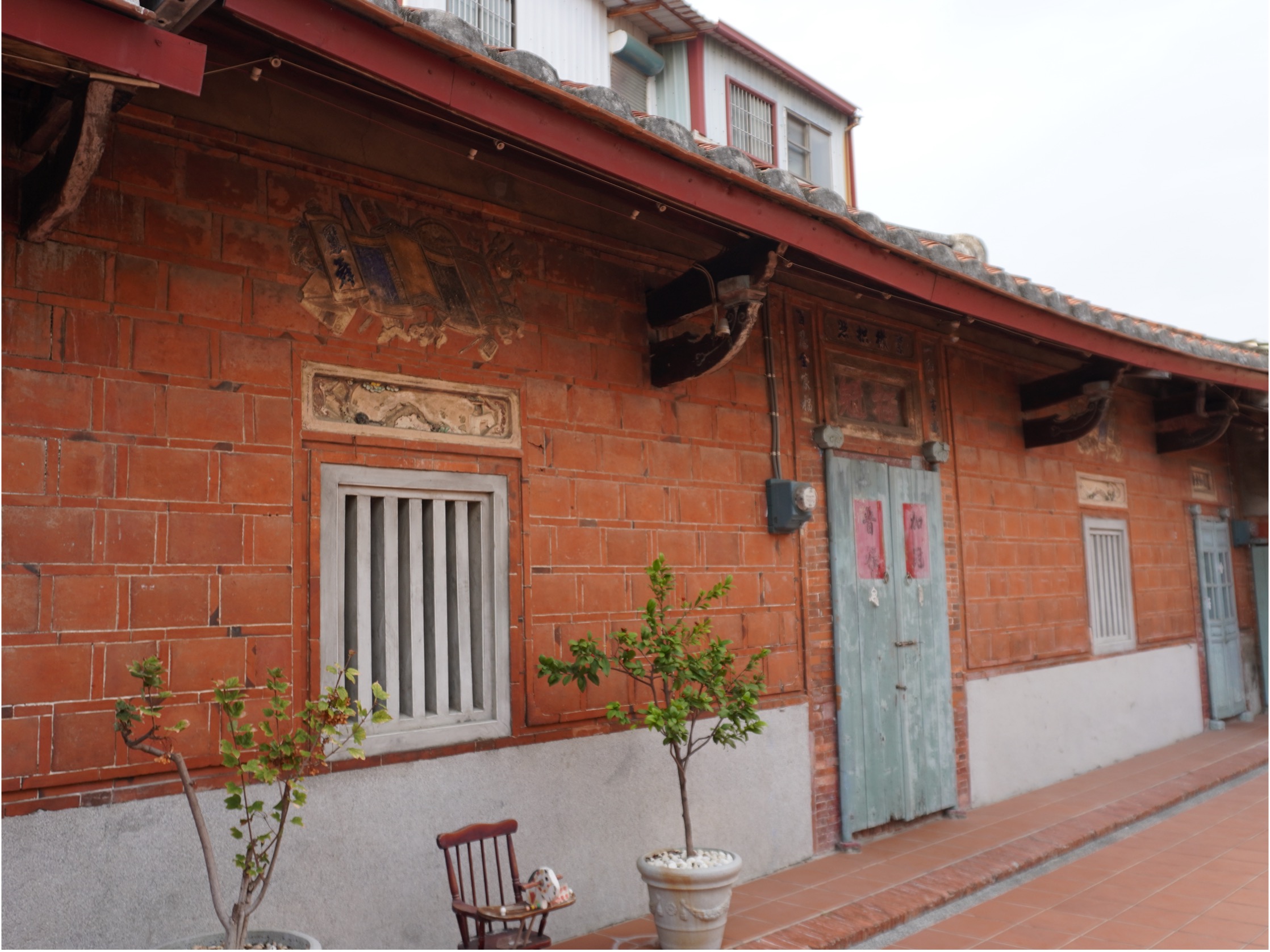
古厝內院
Ms.Xue's gaze pierces through the historical mist, "This mansion was first built in 1909, predating the Liao Family Ancient House in the same lane. Judging from the door frame details and construction techniques, it seems to have been crafted by the same artisan." Originally a traditional structure with seven open rooms and two extended wings, the main hall was divided into upper and lower sections forming a courtyard in the layout of a Sanheyuan. However, due to changes in property rights and subsequent alterations to the building and land, the entrance had to be moved to the lane. The Guo family, primarily engaged in farming, would bring their harvest back to their courtyard. Simple agricultural tools are displayed beside the house, serving as visual aids for guided storytelling. Of particular note is the birdcage hanging from above, which Ms.Xue humorously mentions as the ancient version of a "guide chicken," a sight now rarely seen in modern times.
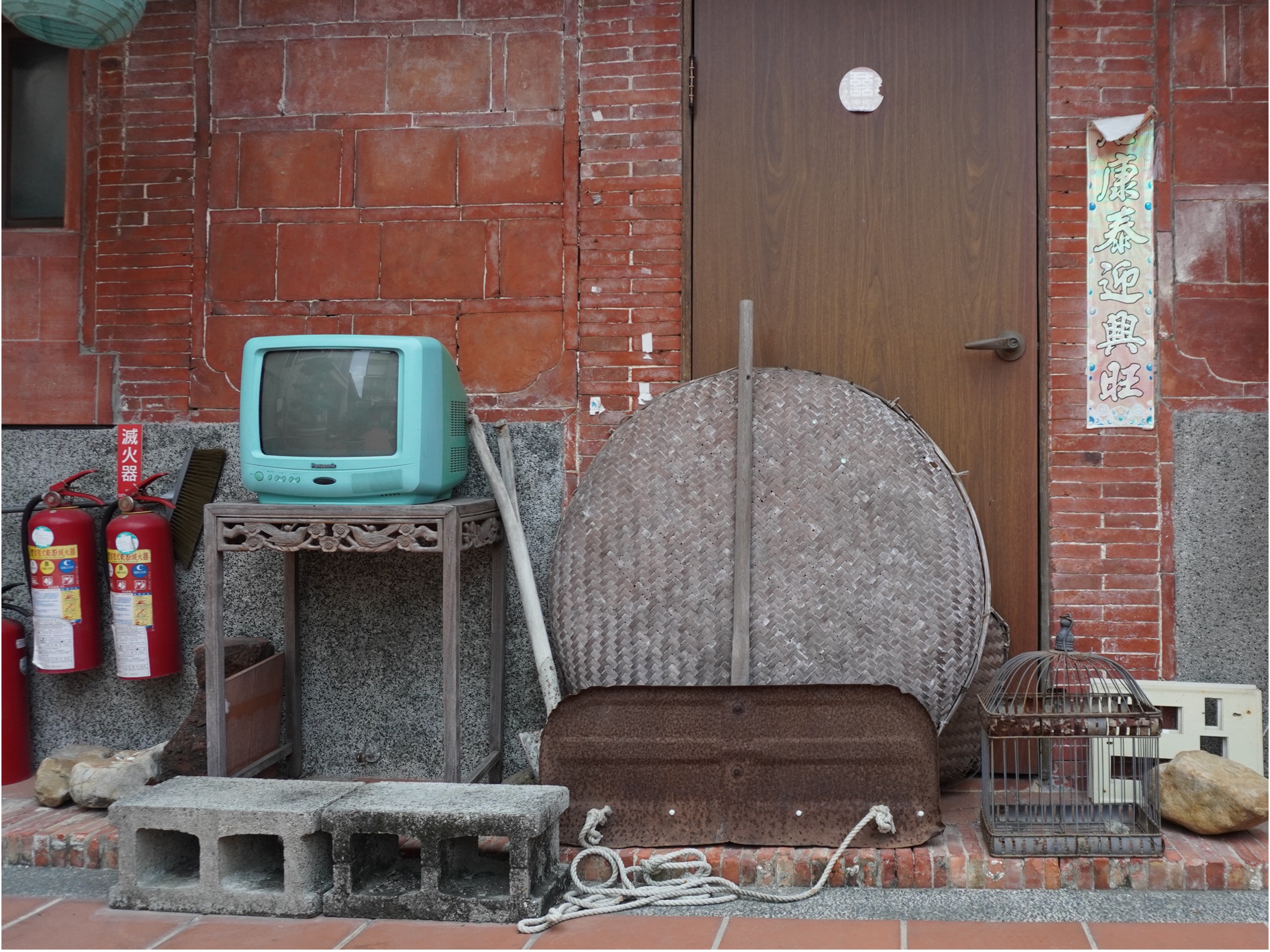
簡單的農具與「帶路雞」
She points to the wooden carvings on the roof, "These wood carvings were meticulously crafted by artisans, representing the superb skills of craftsmen from that era. It's evident that the economic condition at the time allowed for the use of high-quality materials, ensuring the durability of this mansion for over a century. "The raised ridge on the roof, shaped like an unveiled ancient Chinese sword, was originally intended to symbolize martial excellence. Though the patterns have faded over time, the rich historical significance endures, passed down through the bricks and tiles. In the courtyard, there are walls made of red bricks with the character "Wan" The roof is covered with willow-shaped tiles that serve as windbreakers. Like the dragon and phoenix depicted on the window lintel's scroll, their characters now worn and indecipherable, they narrate the rise and fall of a family's fortunes.
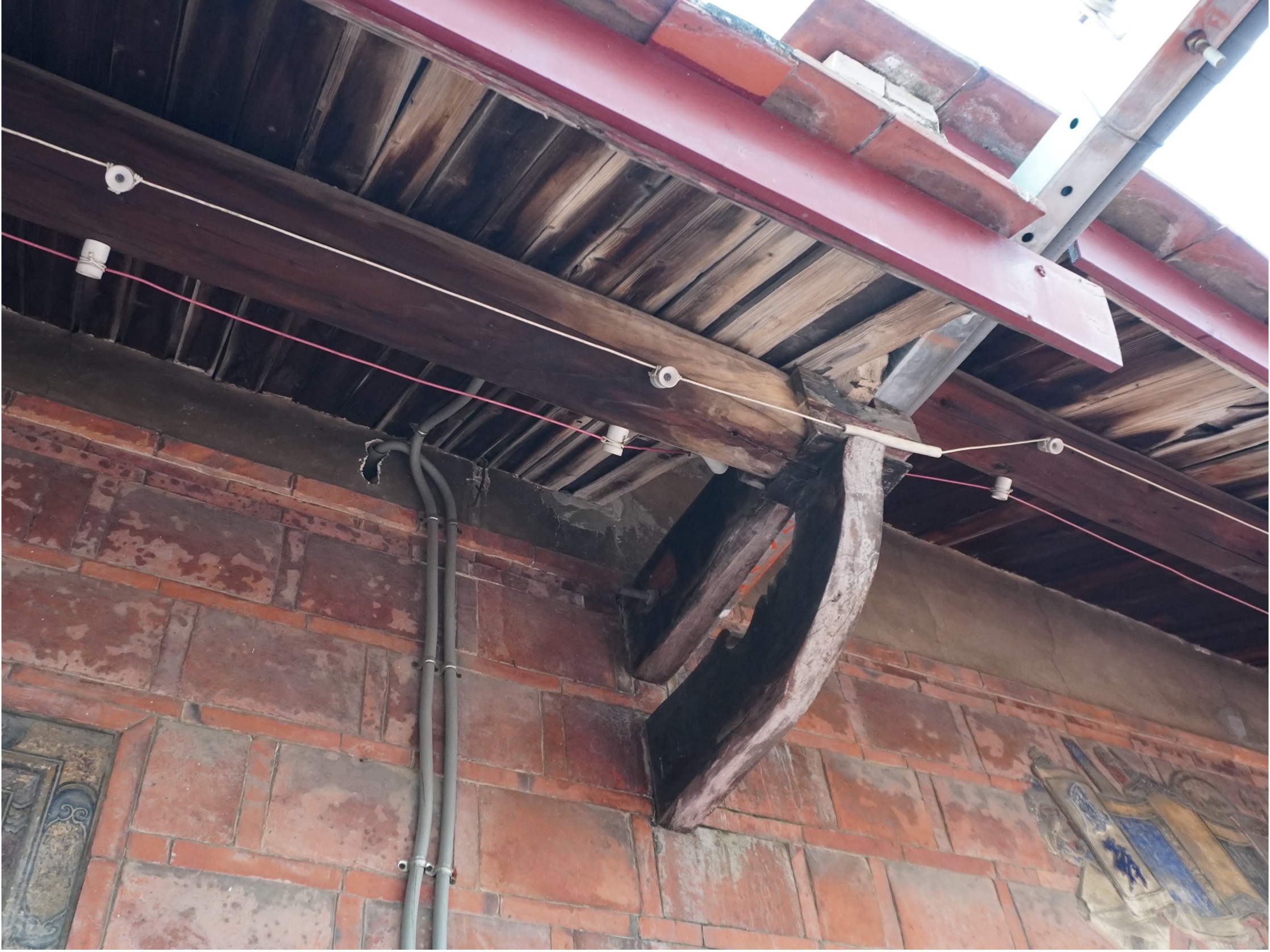
懸樑與木雕
As accessing other rooms used for the bed-and-breakfast was inconvenient, Ms.Xue specifically opened the main hall's door to invite us for a tour. Numerous antique items, such as old furniture, toys, and clothing, are displayed here. Normally used for the traditional Chinese baby celebration activity, it also serves as a valuable historical and cultural promotion space for schools and the public. During our conversation, I noticed a floor opening in the management room. Sister Xue chuckled, acknowledging my keen observation, and explained that it was an air-raid shelter built during World War II to protect their family during frequent air raids. Originally, there were three shelters in the courtyard, but during renovations, only the smallest one was preserved. Mr.Xue gestured for me to go down and explore. Lifting the heavy glass cover, I descended a few steps to see an area of roughly one to two square meters. The limited height didn't allow standing, but every corner exuded an abundance of untold historical stories, witnessing the tumultuous times of wartime.
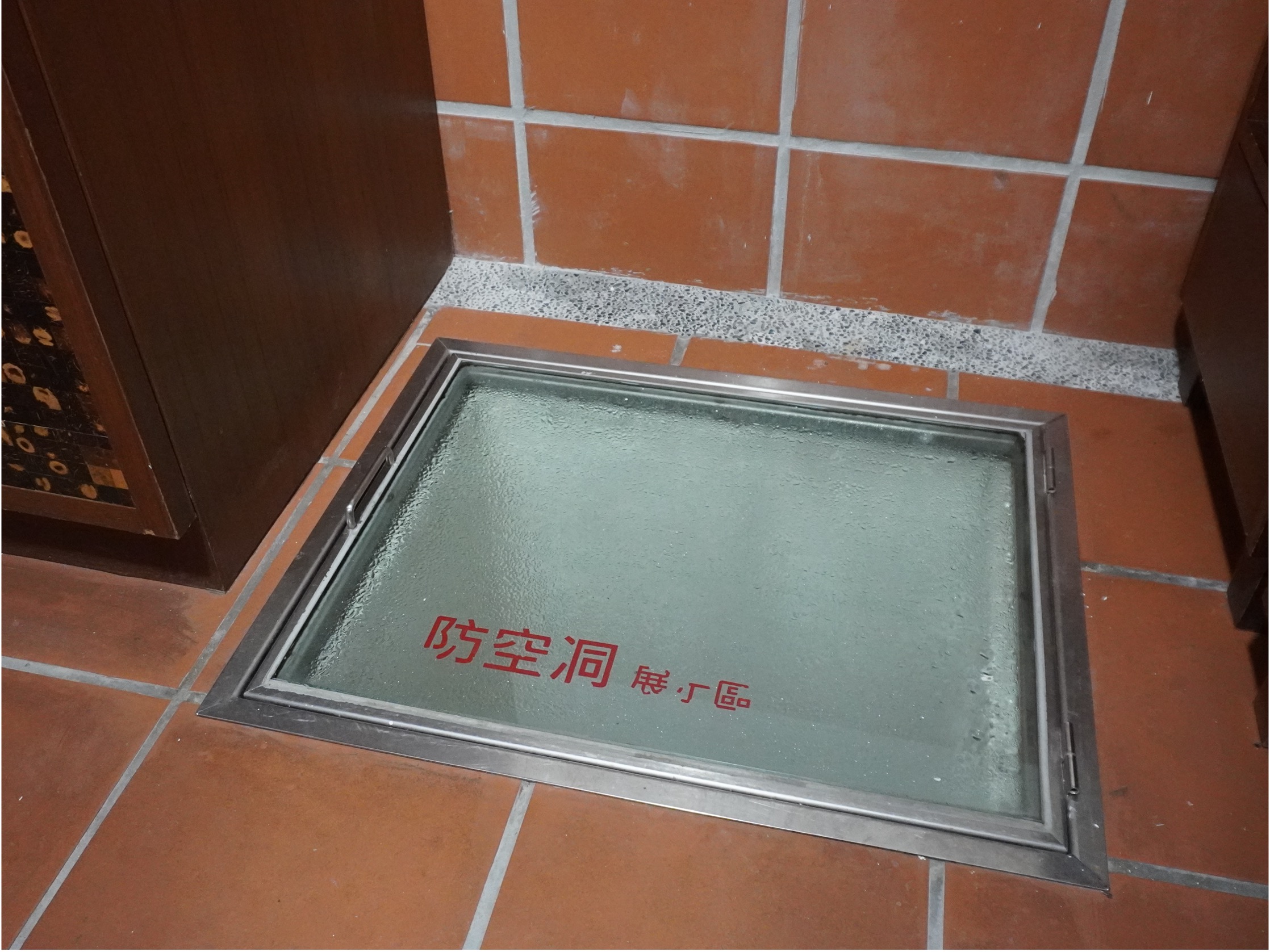
防空洞
As Ms.Xue spoke, we navigated through the Xie Family Ancient House, experiencing the effort and perseverance required to preserve culture. "Preserving a historic residence is not a simple matter; it requires the collective effort of family members. While the owner entrusts property management for regular maintenance, renting out a room for two thousand a night makes it challenging to ensure the proper preservation and management of the historic residence. Promotion and events are still necessary," Ms.Xue's tone carried a sense of responsibility and mission towards the mansion.
I asked Ms.Xue, being from a prominent family in the Zuoying area herself, if she had any insights to share about her family's heritage. She responded, "Surnames in the old Zuoying area include Guo, Xie, Huang, Zeng, and others, including my own Xue family. In the past, people focused on securing their livelihoods. Unlike today, they didn't understand the importance of cultural preservation. Now, we can contribute more to promotion. I hope more people come in to experience the lifestyle of the past and imagine how challenging survival was back then. In the past, these houses were mostly earthen buildings. It was only when families had the means that they could afford brick houses with spacious courtyards. The whole family had to work together." Ms.Xue's tone carried a nostalgic sentiment, infusing the entire interview with profound reflections.
We concluded with a cheerful group photo. As I glanced back before leaving, the exterior walls of the ancient House in the lane, though appearing to be constructed with red bricks, revealed that not many buildings from that era were made of bricks. Most were earthen buildings, and a preserved section near the entrance testified to this fact. This interview provided me with a deep understanding of the architectural features and preservation efforts of this ancient mansion. Life, every day, is an accumulation of history, and our roots are nurtured by it. This journey through time allowed us to feel the weight of the land and appreciate the rich cultural heritage carried by the Xie Family ancient house.
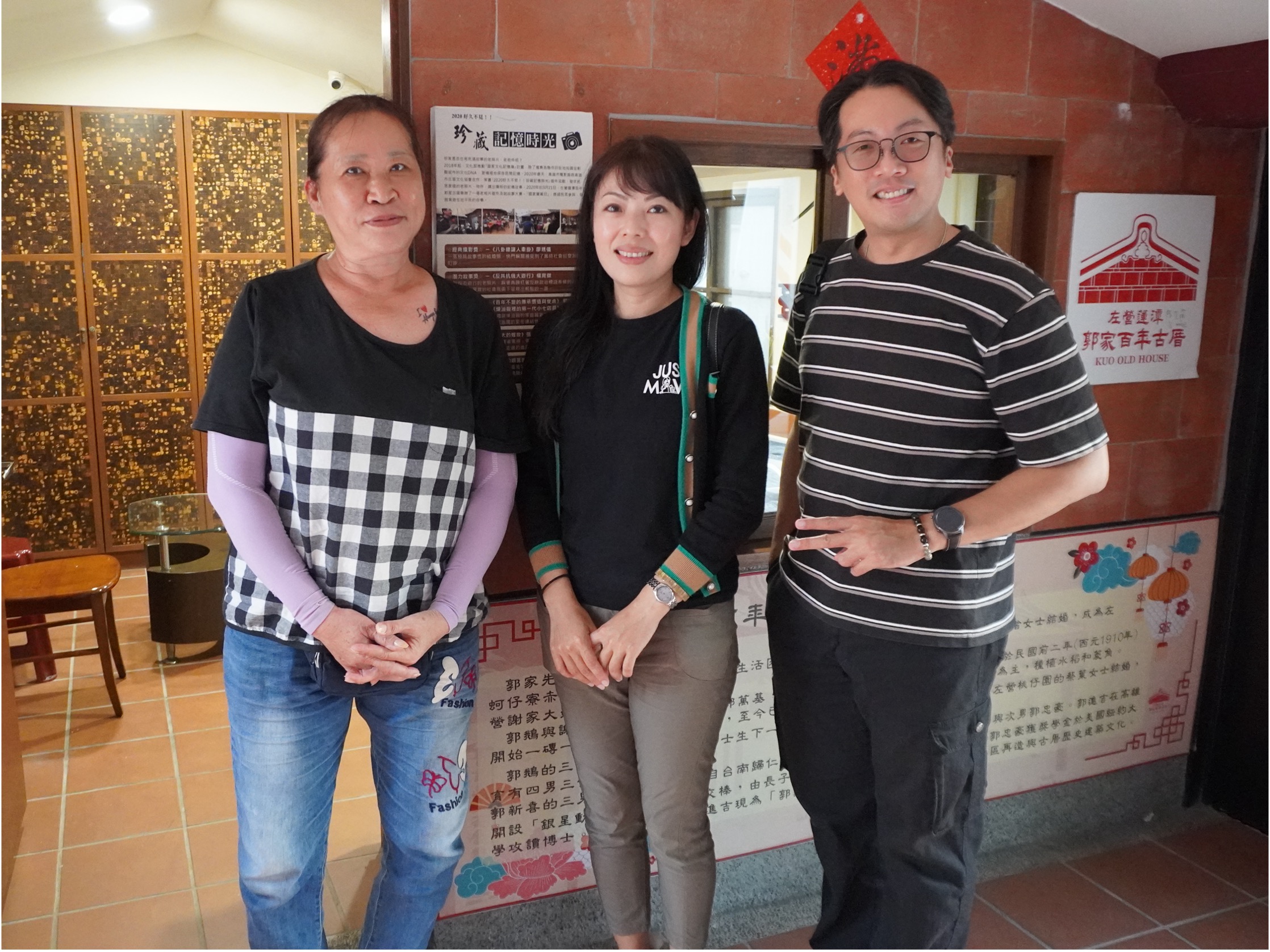
作者與薛大姐的合影
